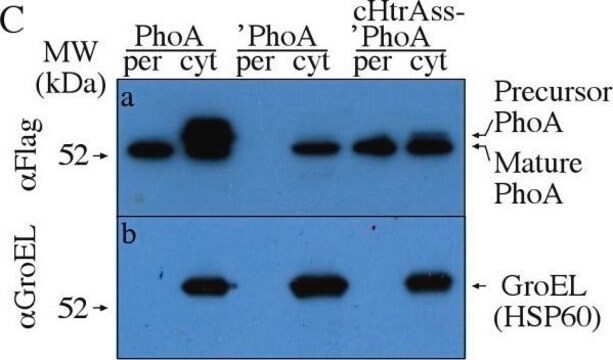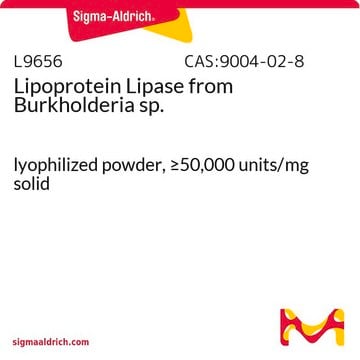A2179
Anti-Mouse IgG (Fab specific)–Alkaline Phosphatase antibody produced in goat
affinity isolated antibody, buffered aqueous solution
Sinônimo(s):
Goat Anti-Mouse IgG (Fab specific)–AP
About This Item
Produtos recomendados
fonte biológica
goat
conjugado
alkaline phosphatase conjugate
forma do anticorpo
affinity isolated antibody
tipo de produto de anticorpo
secondary antibodies
clone
polyclonal
forma
buffered aqueous solution
reatividade de espécies
mouse
não deve reagir com
horse, human, bovine
técnica(s)
direct ELISA: 1:40,000
immunohistochemistry (formalin-fixed, paraffin-embedded sections): 1:25
western blot (chemiluminescent): 1:80,000
Condições de expedição
wet ice
temperatura de armazenamento
2-8°C
modificação pós-traducional do alvo
unmodified
Procurando produtos similares? Visita Guia de comparação de produtos
Descrição geral
Imunogênio
Aplicação
- western blotting
- immunoblotting
- enzyme linked immunosorbent assay (ELISA)
- immunohistochemistry
Ações bioquímicas/fisiológicas
Outras notas
forma física
Nota de preparo
Exoneração de responsabilidade
Not finding the right product?
Try our Ferramenta de seleção de produtos.
Código de classe de armazenamento
12 - Non Combustible Liquids
Classe de risco de água (WGK)
WGK 2
Certificados de análise (COA)
Busque Certificados de análise (COA) digitando o Número do Lote do produto. Os números de lote e remessa podem ser encontrados no rótulo de um produto após a palavra “Lot” ou “Batch”.
Já possui este produto?
Encontre a documentação dos produtos que você adquiriu recentemente na biblioteca de documentos.
Nossa equipe de cientistas tem experiência em todas as áreas de pesquisa, incluindo Life Sciences, ciência de materiais, síntese química, cromatografia, química analítica e muitas outras.
Entre em contato com a assistência técnica




![Tributyl[(methoxymethoxy)methyl]stannane AldrichCPR](/deepweb/assets/sigmaaldrich/product/structures/405/394/e2659ee0-7927-4ef9-b0bc-dc331065f409/640/e2659ee0-7927-4ef9-b0bc-dc331065f409.png)



